Snow falling in moderation creates a winter wonderland perfect for sledding and sipping hot cocoa. But excess snow in certain conditions can be deadly and destructive. Blizzards cause property damage, car accidents, hypothermia, and even death. Rapidly falling temperatures combined with blowing snow, high wind speeds, and low visibility is a recipe for disaster. Check out this list of the 11 worst blizzards in the United States.
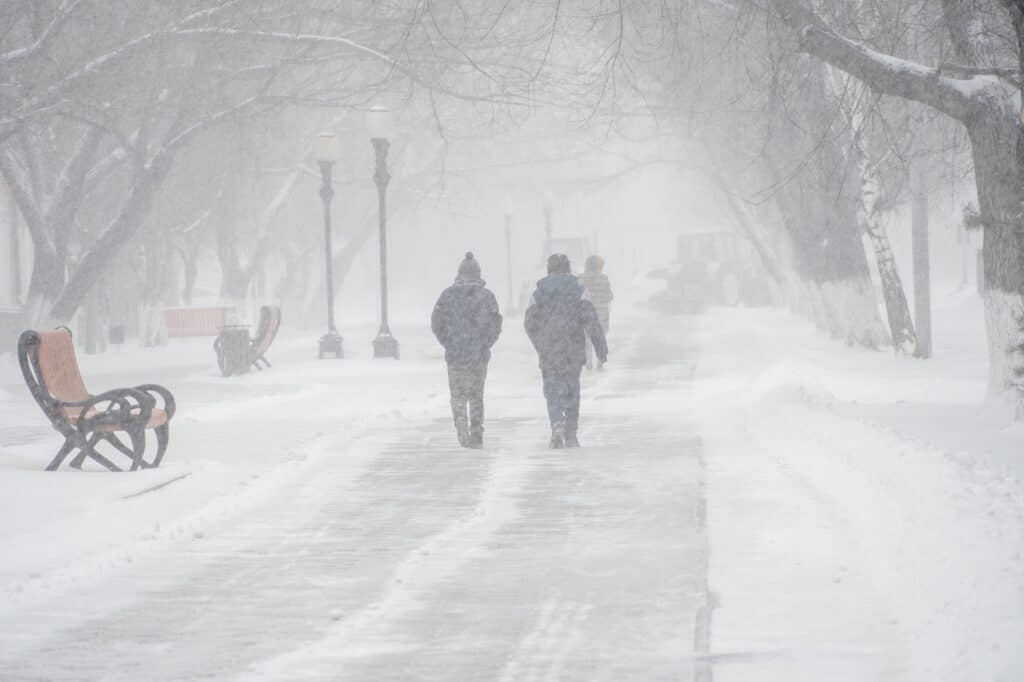
The Great Blizzard of 1888 was the worst in US history. Over 400 people died.
©Sambulov Yevgeniy/Shutterstock.com
The Great Blizzard of 1888
In March 1888, snow pounded the East Coast, from the Chesapeake Bay to Maine. The storm lasted several days and accumulated up to 50 inches of snow in some parts with sustained winds of 45 Mph, producing snow drifts up to 50 feet high. Emergency services were halted, railway and telegraph lines became disabled, and people were stuck in their homes for a week. This historic blizzard was one of the worst in US history, taking 400 lives and creating $25 million in damages.
Year: 1888
Location: East Coast
Deaths: 400
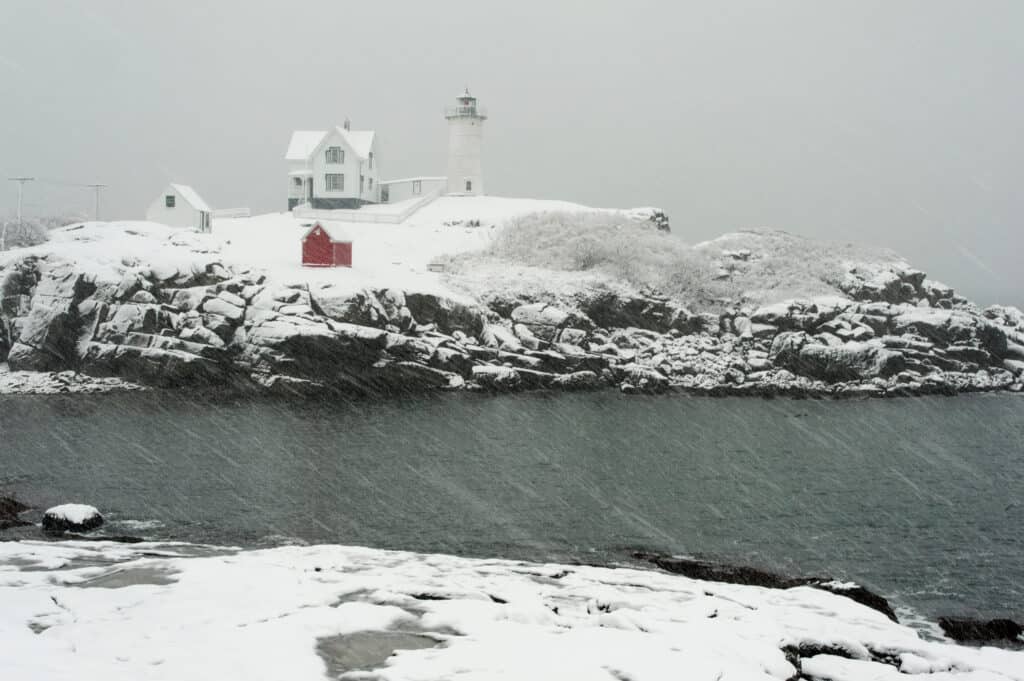
Rapidly falling temperatures, blowing snow, high wind speeds, and low visibility is a recipe for disaster.
©Allan Wood Photography/Shutterstock.com
Great Appalachian Storm 1950
The storm of 1950 is one of the few that ranks as a category five on the regional snowfall index. This extratropical cyclone blew through the Eastern United States, causing a blizzard on the west side of the Appalachian Mountains and hurricane winds and rain on the east side. 160 Mph winds were recorded in New England, disrupting power to over one million residents. This incredible storm hit 22 states, killed 383 people, injured 160, and caused $66 million in damages.
Year: 1950
Location: Eastern United States
Deaths: 383
The White Hurricane 1913
An extratropical cyclone produced blizzard conditions and hurricane winds that battered the Great Lakes region. From November 7-10, 1913, 250 people died, the storm destroyed numerous ships, and industries lost millions in cargo. Cities in Minnesota, Illinois, and Ohio received up to 22 inches of snow, and people were shut in for days. The Weather Bureau failed to predict the severity of the blizzard, leaving many unprepared.
Year: 1913
Location: Great Lakes
Deaths: 250

The “White Hurricane” of 1913 destroyed numerous ships, and industries lost millions in cargo.
©Craig Hinton/Shutterstock.com
Children’s Blizzard 1888
January 12, 1888, was an unseasonably warm day for the Great Plains. Children were at school, and adults were at work or out running errands, utterly unaware of what was to come. By 3 PM, the weather significantly shifted, and within a few minutes, one of the worst blizzards in US history poured down on these small towns. People and animals caught in the open froze to death in a matter of minutes, and many of those inside quickly ran out of fuel for their fires. Children were in schoolhouses when the storm hit, and those who made it out alive were led through the tundra tied to ropes. The temperature in some areas got down to 58 degrees below zero. 235 people died throughout the Midwest.
Year: 1888
Location: Great Plains
Deaths: 235
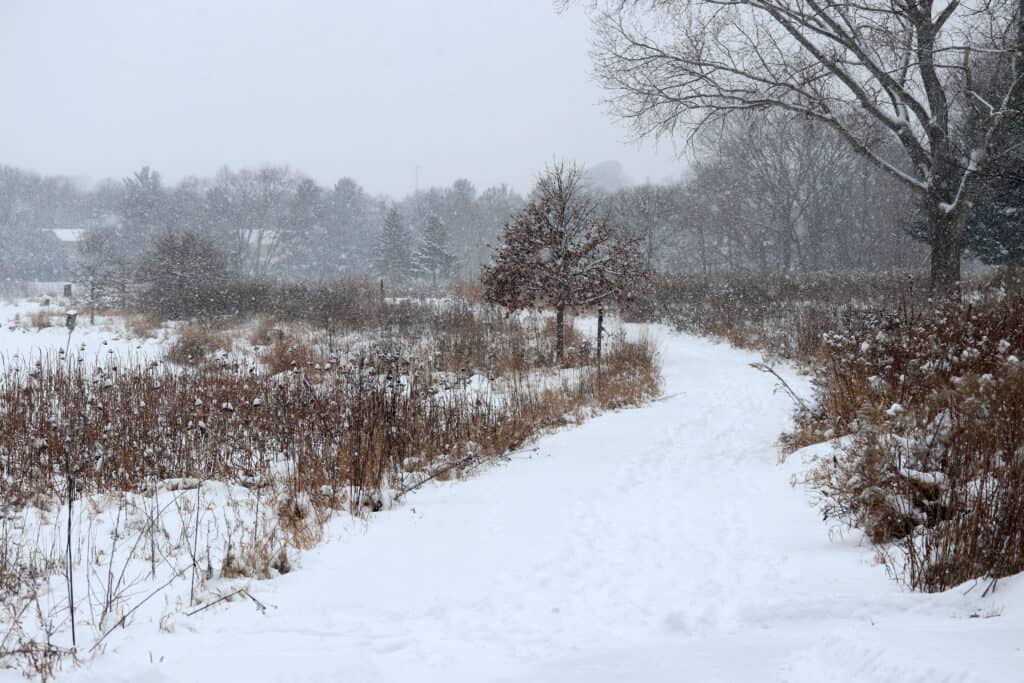
During the Children’s Blizzard of 1888, the temperature in some areas dropped to 58 degrees below zero.
©MarynaG/Shutterstock.com
The Storm of the Century 1993
On March 12, 1993, a sizeable cyclonic storm made its way from the Gulf of Mexico, up the East Coast, and into Canada. The storm was so intense and massive that it coated places like Alabama and Georgia with 13 to 35 inches of snow. Between Louisiana and Cuba, hurricane-force winds spawned a group of tornadoes that killed dozens of people. Record-cold temperatures swept through the Southern and Eastern United States, leaving millions without electricity. The storm’s effects took 208 lives and caused $2 billion in damages.
Year: 1993
Location: Southern and Eastern United States, Caribbean Islands, and Canada
Deaths: 208
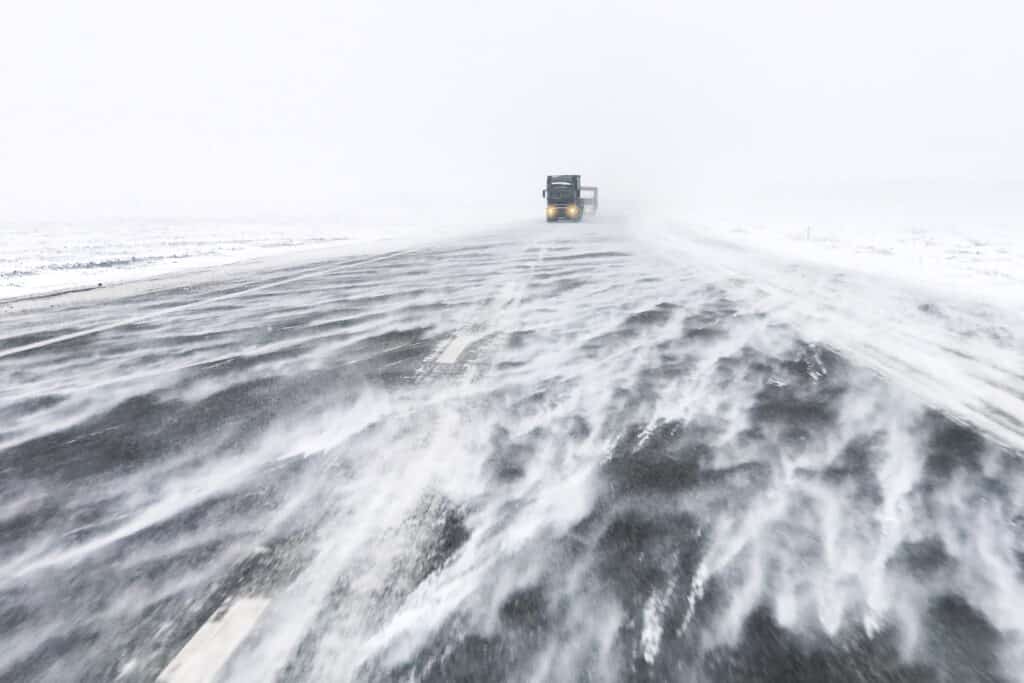
Blizzards create hurricane wind speeds, snow drifts several feet high, and extreme temperature decreases.
©Vitaliy Kaplin/Shutterstock.com
Armistice Day Blizzard 1940
On November 11, 1940, Forecasters predicted a warm, sunny day throughout the Midwest. Men took off work to go duck hunting, and people walked outside with only light jackets. Temperatures rose to the mid-60s by early afternoon but began dropping shortly after. The wind picked up, rain and snow began to fall, and a tornado made landfall. A low-pressure system blew in and produced a raging blizzard. The temperature dropped by 50°, and snowfall accumulated to 27 inches. Many of the duck hunters enjoying their day off froze in the cold or drowned trying to get to safety. Overall, 154 people died within two days.
Year: 1940
Location: Midwest
Deaths: 154
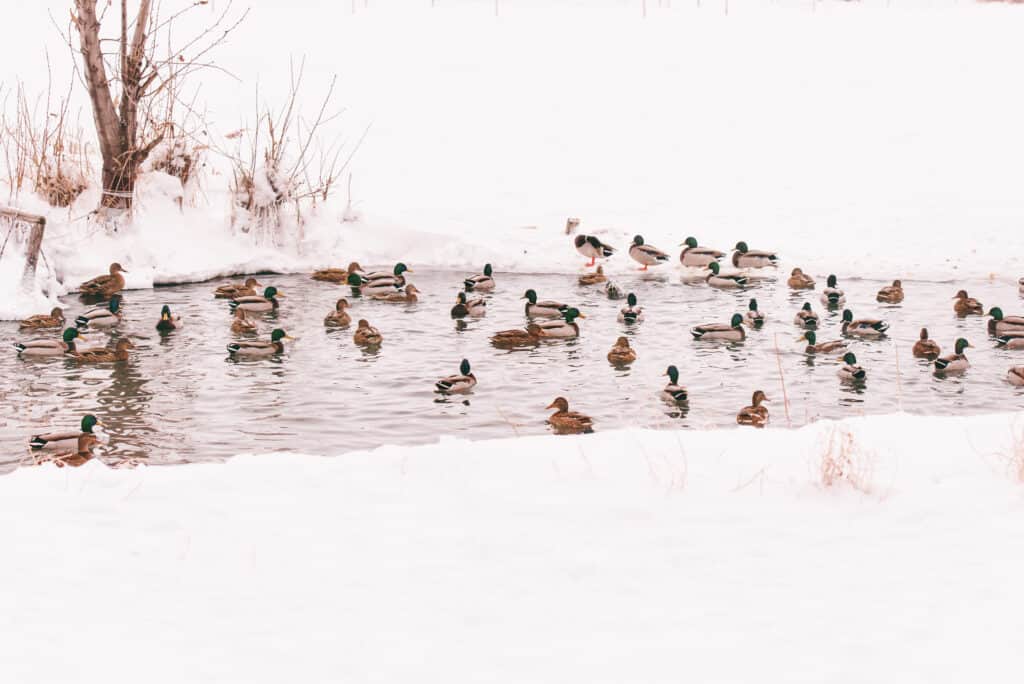
Many duck hunters froze or drowned trying to get to safety during the 1940 Armistice Day Blizzard.
©Alexander Veprikov/Shutterstock.com
The North American Blizzard of 1996
For two days (January 6-8, 1996), a category five “extreme” blizzard demolished the East Coast with four feet of snow. Due to an unseasonably warm January, the snow started to melt several days later, creating massive flooding. The damage was over $3 billion; 154 people died from the blizzard and another 33 from the floods.
Year: 1996
Location: East Coast
Deaths: 154
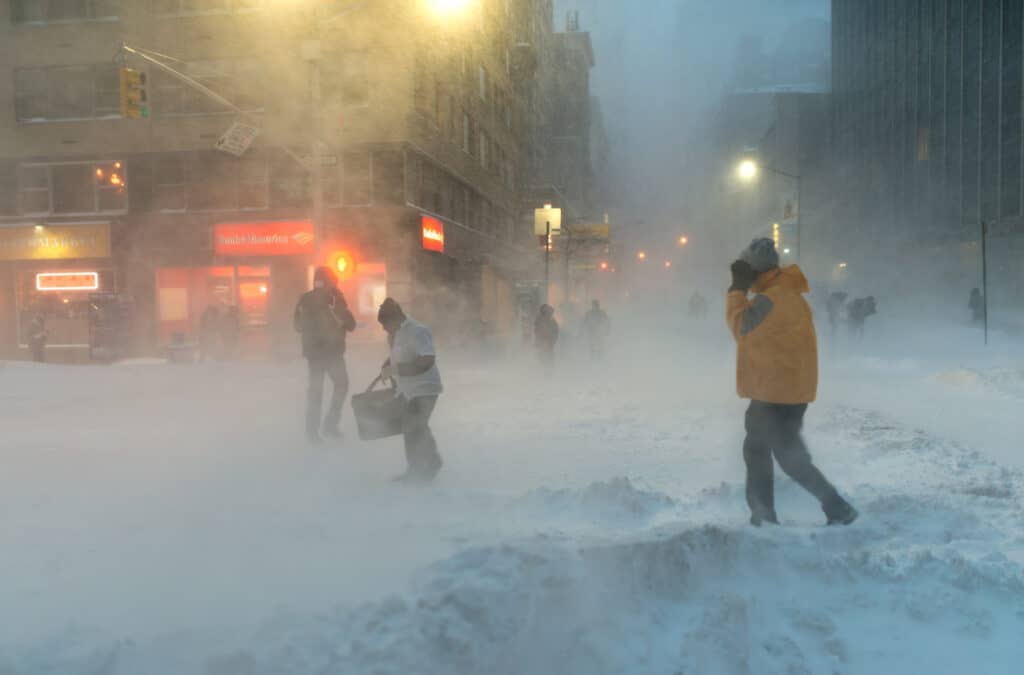
Because blizzards are often preceded by warm weather, people are caught off guard and unprepared.
©lpedan/Shutterstock.com
The Great Blizzard of 1899
Between February 10-14, 1899, a winter storm and historic cold wave moved through most of the United States, mainly east of the Rocky Mountains. Much of the country, including the South, reported record-breaking temperatures in the single digits. Due to the bitter cold and extreme weather, over 100 people died, several bird species froze to death, and the ice utterly destroyed crops.
Year: 1899
Location: East of the Rockies
Deaths: over 100
Knickerbocker Storm 1922
A blizzard made its way through the Northeastern United States on January 27-28, 1922. Temperatures stayed in the 20s, and over 20 inches of snow accumulated from the Carolinas to Pennsylvania. Shortly after 9 PM on January 28, the storm caused the Knickerbocker Theatre in Washington DC to collapse, killing 98 people and injuring 133. The weakened brick walls holding the building up collapsed under the weight of the heavy snow. The theatre’s architects later killed themselves.
Year: 1922
Location: Northeast
Deaths: 98

In 1922, the storm caused the Knickerbocker Theatre to collapse, killing 98 people and injuring 133.
©Everett Collection/Shutterstock.com
Chicago Blizzard of 1967
This 1967 blizzard hit parts of Illinois and Indiana on January 26-27. Chicago and its suburbs were struck the hardest, and the storm caught many off guards as they went to school and work for the day. The blizzard quickly became a category five, producing 50 Mph wind gusts and snow drifts up to 15 feet. All transportation stopped, effectively paralyzing the city and resulting in $150 million in damages. 26 people died in Chicago, and 60 overall.
Year: 1967
Location: Illinois and Indiana
Deaths: 60

The category 5 Chicago Blizzard of 1967 produced 50 mph wind gusts and snow drifts up to 15 feet.
©Jake Hukee/Shutterstock.com
Great Storm of 1975
The Great Storm began with 45 tornadoes pummeling their way through the Southeastern States before dropping over two feet of snow in the Midwest. Over 100,000 farm animals perished and at least 58 people (an additional 12 from the tornado). Some roads were closed for over a week, wind gusts reached 90 Mph, and snow drifts were 20 feet high.
Year: 1975
Location: Midwest
Deaths: 58

In the Great Storm of 1975, wind gusts reached 90 mph, and snow drifts were 20 feet high.
©justoomm/Shutterstock.com
The photo featured at the top of this post is © Jacob Boomsma/Shutterstock.com
FAQs (Frequently Asked Questions)
What was on of the worst blizzards in US history?
The Great Blizzard of 1888 was one of the worst in US history, taking 400 lives and creating $25 million in damages.
What was "The Storm of the Century?"
Between Louisiana and Cuba, hurricane-force winds spawned a group of tornadoes that killed dozens of people. Record cold temperatures swept through the Southern and Eastern United States, leaving millions without electricity. The storm’s effects took 208 lives and caused $2 billion in damages.
Thank you for reading! Have some feedback for us? Contact the AZ Animals editorial team.







